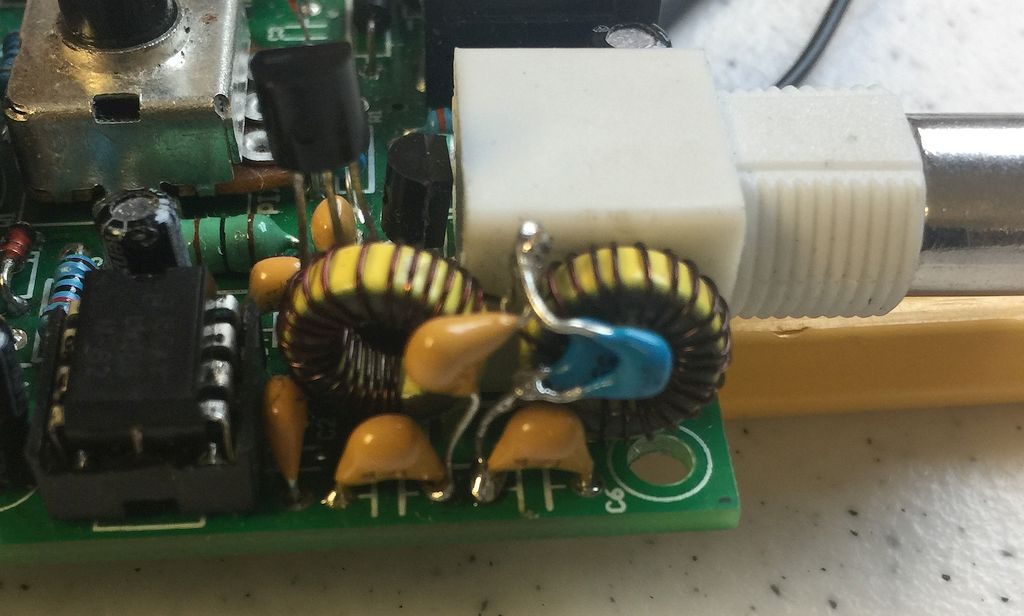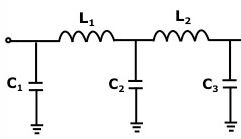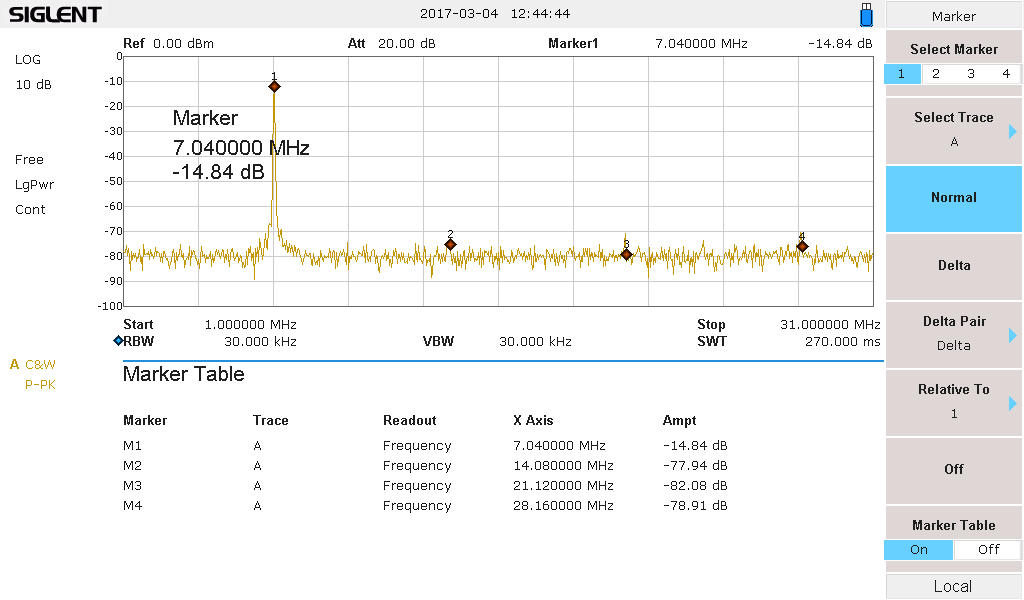As has been noted in several posts, the stock Pixie 3-pole filter is hopelessly inadequate to suppress harmonics. A typical Pixie will have a 2nd Harmonic that is only about -21 dB down from the carrier. An external 5-pole filter did not improve things well enough, and ultimately a 7-pole external filter was required. In both those cases, the original 3-pole filter remained in place.
However, what if the original Pixie filter was replaced with a 5-pole design? Would that be enough? A friend of mine, Willy W1LY, set out to discover just that. He pulled the original axial leaded inductor (L2) and replaced it with a pair of T37-2 toroids. He then paralleled additional caps on the input and output side (C5/C6), and finally added a new cap between the two toroids. He was able to fit all of that in the space of the original filter plus a bit of open area next to the BNC connector. In addition, Q2, the S8050 output transistor, was replaced with a P2N2222A.

Elsie 1 dB ripple 5-pole filter. Note, it shows 2 caps between the toroids — only one cap is required
- C1/C3 input caps were set to 910 pF (standard value — Willy used 940)
- C2 cap was set to 1300 pF (standard value — Willy used 1270)
- L1/L2 were set to 1.2 uH (20 turns #26 on T37-6 core)

The results were pretty much ideal. The 2nd harmonic was suppressed by 63 dB (other harmonics were even lower). The fundamental power was increased to 25.2 dBm, or 330 mW. (Spectrum Analyzer is fed through a 40 dB external attenuator)
Given the current 5-pole LPF filter values are producing a 2nd harmonic rejection that is about 20 dB more than required, there is some room to improve the ripple response of the filter, which would probably boost the output power to 450 mW or higher. But 330 mW is more power than any stock Pixie has ever produced (usually they are around 200-250 mW out at 13.8 volts input). Another experiment would be to change the toroids out for 1.2 uH axial inductors.









